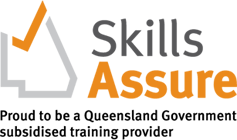Having the ability to provide the relevant first aid treatment is an incredibly important skill that benefits not only an injured or ill person but also everyone around you. With an individual who has completed first aid training on hand, you’ll find that most people feel safer and more confident in medical emergencies.
One environment in particular that should always have access to professional first aid treatment and first aid equipment is the workplace. What’s more, every employee, regardless of position or industry, deserves to feel safe at work. For these reasons, it’s imperative that we collectively encourage as many people as possible to consider studying first aid courses.
As of February 2023, it is estimated that less than one in three employees feel confident enough to perform the necessary first aid procedures in workplace emergencies.
At Sage Education, we’re driven to emphasise the importance of workplace first aid, and so, in today’s guide, we shall reveal vital information pertaining to the role of first aiders in a professional setting. Additionally, we shall explore the avenues you can take to become a proficient first aid officer!
What is a First Aid Officer?
If you’ve taken an interest in learning first aid, then your first step to becoming a first aid officer is to know what a first aid officer actually is.
A first aid officer is a trained first aider who has the capabilities to take care of casualties involved in a medical emergency. Typically, first aid officers tend to casualties who have suffered an injury or illness in the workplace. A qualified first aid officer will always have a first aid certificate to verify that they are able to provide the appropriate assistance to those in critical conditions.
‘What does appropriate assistance entail?’ you may ask. Well, to put it simply, a first aid officer must know how to carry out the following first aid procedures:
- They must know how to assess the situation and surrounding environment for any hazards like chemical spills or electrical risks before applying immediate first aid treatment.
- They must know how to stock first aid kits in accordance with the risk assessment of their professional environment.
- They must know how to conduct infection prevention practices, such as ensuring their hands are clean before interacting with the casualty and cleaning up spills of blood and body substances.
- They must know how to place an unconscious casualty into the recovery position.
- They must know how to perform cardiopulmonary resuscitation (CPR) if necessary.
- They must know how to use automated external defibrillators (AEDs).
- They must know how to stop bleeding using pressure and elevation.
- They must know how to keep a fractured limb still.
- They must know to call 000 (the Australian Emergency Number) if they suspect a serious injury or illness.
- They must assist managers in conducting first aid assessments and help their colleagues locate and identify the uses of first aid supplies.
- They must have an understanding of mental health first aid.
Why You Should Become a First Aid Officer For Your Workplace
Although a first aid officer has a lot more responsibilities than your average employee, the importance of having first aid officers in the workplace can’t be overstated. There are many reasons to learn how to administer first aid in a professional environment. If you’re still on the fence about whether or not you should pursue a first aid course, then hopefully, the reasons below will give you the motivation you need!
You Can Save Lives and Relieve Pain
In the event of a medical emergency, how you and your colleagues respond in the first few minutes can mean the difference between a minor injury and a severe, prolonged medical condition. In extreme cases, how you respond in the first few minutes after an emergency/accident can also mean the difference between life and death.
By being able to administer immediate treatment to the affected casualties, you can save someone’s life! Even in minor incidents, your training and calm manner can help to relieve the affected casualties of physical pain or emotional distress.
You Can Give Your Colleagues Peace of Mind
When your colleagues know that they have a trained first aid officer in their midst, they are likely to feel safer at work, experiencing a boost in morale and confidence. Not only will this improve employee retention rates, but you’ll also have the chance to share your knowledge with your co-workers, teaching them how to stay calm in an emergency.
You Can Protect Your Employers and Company
When an injury or emergency occurs in the workplace, your employer could potentially be held accountable for any damages in the event that they did not provide adequate first aid training, first aid kits, and other personal protective equipment like disposable gloves.
By becoming a first aid officer and sharing your knowledge and any relevant further information with your colleagues, you can help your employers protect themselves from hefty lawsuits. In turn, this will protect you and your co-workers from how the financial repercussions of said lawsuits may affect the business.
What is the Difference Between First Aid Officers and an Appointed Person?
Now that you know the importance of becoming a first aid officer and what a first aid officer is, it’s essential that we also discuss what a first aid officer is not.
Since you’ve shown an interest in becoming a first aid officer, it’s likely that you’ve also encountered the term ‘appointed person’. For the sake of transparency, an appointed person is not the same as a first aid officer and shouldn’t be relied upon to do the same roles.
An appointed person is required to monitor and take charge of first-aid arrangements, such as maintaining first-aid equipment and replenishing the first-aid kit. They are also responsible for calling the emergency medical services in a crisis.
Appointed persons are only ideal for low-risk professional settings where it has been decided that there is no need for a first aider.
What is the Difference Between FAW and EFAW?
We’ve clarified the difference between first aid officers and appointed persons. However, we should also clarify the difference between FAW and EFAW.
In order to become one of the trained first aiders in your workplace, you must have one of the following first aid certificates:
– A first aid at work certificate (FAW).
– An emergency first aid at work certificate (EFAW).
– A certificate, qualification, or any other level of training that is appropriate to the situation.
To know which certificate you need to identify and provide possible first-aid solutions, you must evaluate the findings from your first-aid assessments. From there, you can decide which first aid qualifications will best prepare you for a potential crisis.
An emergency first aid at work (EFAW) certificate is ideal for those who work in high-risk environments, as EFAW training enables a first aid officer to provide emergency first aid to a sick or injured individual at work.
On the other hand, a first aid at work (FAW) certificate indicates that the certificate holder has the ability to apply first aid to a vast array of specific injuries and illnesses. For this reason, FAW-trained first aiders are best situated in low-risk environments.
However, regardless of which course you deem best for your unique circumstances, you must remember to keep your first aid skills up to date by taking annual refresher training.
How to Become a Trained First Aid Officer For Your Workplace
You know what the role of a first aid officer entails. You know the importance of pursuing a first aid course. Now, it’s time to learn what you need to do in order to become a first aid officer for your workplace.
- The first step is to inform your employer that you are interested in becoming a first aid officer and are willing to train to acquire first aid certification.
- Next, you should enrol in a first aid course. The course you choose should cover the basics of first aid treatment and is accredited and recognized by the authorities.
- Once you have successfully completed the course, you should inform your employer that you have the necessary certificates and competencies to provide first aid in the workplace.
- From here, you should take the time to acquaint yourself with the unique policies of your workplace. You should also ensure that you stay up-to-date with any additions or adjustments made to said workplace policies.
- Now, with the knowledge that you’ve acquired, you should try to teach your co-workers essential first-aid skills so they are also prepared for a workplace emergency.
- The last step is to make sure your certifications are always valid. Typically, first aid certificates are only valid for three years in Australia, so it’s vital that you attend refresher courses when necessary.
Where You Should Study to Gain Fundamental First Aid Skills
Now that you know how to become a first aid officer for your workplace, you need to make an important decision – you must decide where you should study first aid. Thankfully, we know the best place for you to gain your first aid certificate.
With Sage Education, a nationally recognised training organisation, you know, like the 3000+ successful graduates before you, that you’re in good hands.
Our mission is simple – we’re driven by compassionate individuals who care about the well-being of others, as well as their own health. We believe that those special individuals deserve the chance to expand their skill sets and knowledge bases so that they can create positive, safe work environments that everyone can benefit from!
When you enrol with Sage Education, you have access to more than just our expertly crafted lectures and flexible learning schedules; you also have access to a wealth of practical knowledge that’ll stay with you for the rest of your life!
What Sage Education Can Offer Prospective First Aid Officers
Sage Education is one of the most esteemed providers of world-class first-aid training in Australia.
We have strived to make all three of our first aid courses as easily accessible as possible, breaking every one of our courses into two parts. The first part consists of an online pre-assessment that you can complete at home. Once you’ve completed your assessment, you can move on to the second part of our course – an in-person training session that will allow you to practice essential skills.
At the most basic level, you’ll learn the following:
– How to assess a dangerous situation for potential hazards and risks.
– How to follow the DRSABC [LINK TO NEW ARTICLE] framework.
– How to perform CPR.
– How to manage an unconscious, breathing victim.
– How to conduct safe manual handling.
For more advanced first aiders, we also provide specialised training concerning how to respond to anaphylaxis and severe bleeding.
Our focus on teaching a vast array of first aid procedures means all of our students will know how to administer first aid not only for injured individuals but also for the vulnerable elders and children of our community.
With Sage Education, you’ll have access to valuable competencies and practical skills that will serve as a solid foundation for your workplace-specific first-aid training!
Enrol with Sage Education to Learn How to Save Lives
With Sage Education, you’ll become the leading authority on first aid in your workplace in as little as four hours!
Enquire today to find out more about our world-class first-aid courses!



